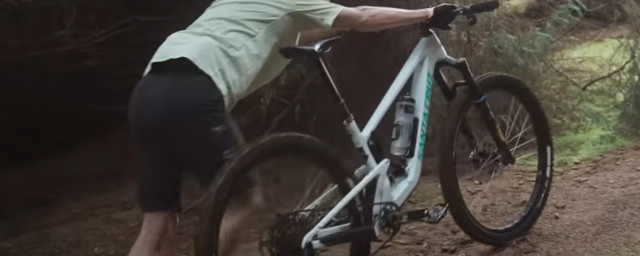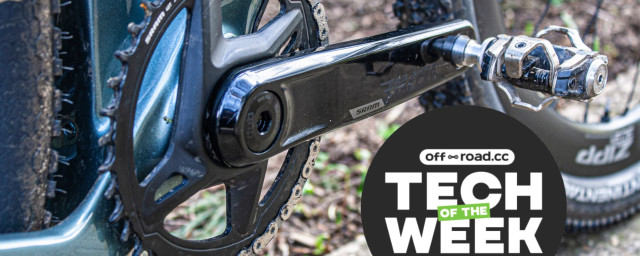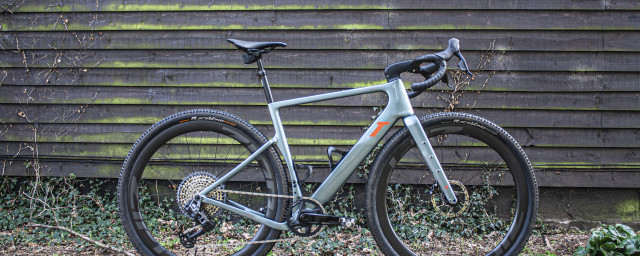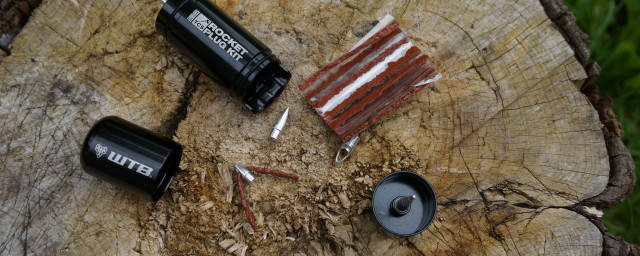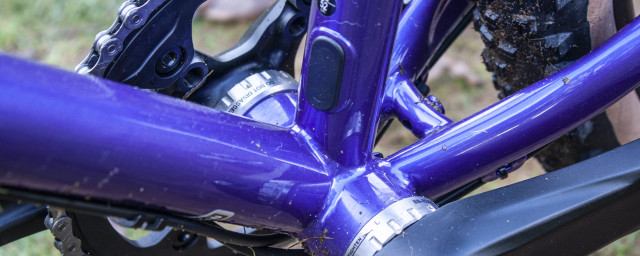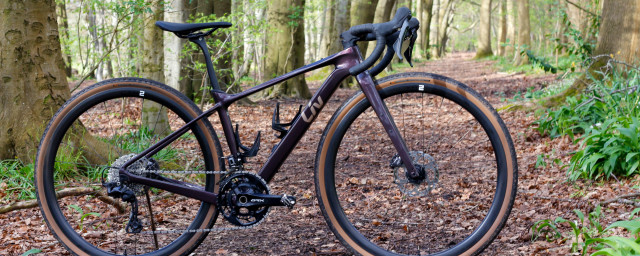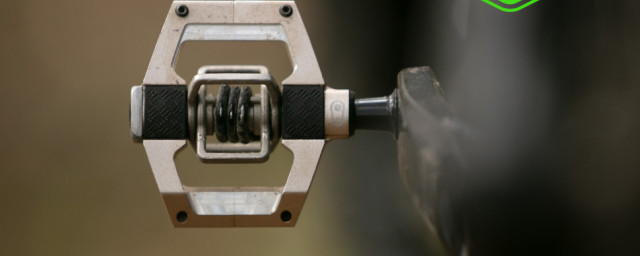It might have drop handlebars and knobbly tyres, but the Salsa Cutthroat C GRX 810 is no normal gravel bike and nor is it a mountain bike. Instead, it is a hybrid of the two, designed to tackle the demanding ultra-adventure race, the Tour Divide. While that may seem niche, I found it incredibly capable and a huge amount of fun to ride. All the same, it does beg the question: would a hardtail mountain bike be a better option?
- The best money-no-object gravel and adventure bikes we've tested
- Mason ISO review
- Ritchey Outback frameset review
Endurance events, and bikepacking in general, have exploded in recent years. Still, there is one event that has been around for longer than it has been cool. The Tour Divide is an annual mass-start independent time-trial event that starts in Banff, Canada and finishes in Antelope Wells, New Mexico. In total, the event is 2,745 miles (4,418km) and tackles some seriously challenging terrain. If you were wondering, the name Cutthroat gets comes from the Cutthroat Trout, a species of fish that can be found in all states that the Great Divide trail passes through – apparently, the staff at Salsa are big fishing fanatics.
Salsa Cutthroat C GRX 810 – Frameset
The Cutthroat as a bike and a concept has been around since 2015 and updated significantly for 2020. Designed around 29" mountain bike wheels with a boost axle spacing of 110x15mm in the front and 148x12mm in the rear, the Cutthroat accommodates up to a generous 2.4" tyre size. The frameset is not designed to use 27.5" wheels or narrower 700c tyres as both would reduce the bottom bracket height and affect the handling.
Constructed from carbon fibre, the frameset feels light and well-balanced, with endless mounting options to allow virtually all styles of bikepacking gear to be carried. The inner frame has thread mounts to accept a full internal frame bag for an ultra-clean setup. Alternatively, 54cm to 60cm frames can fit three bottle cages within the frame, including two mounted bottles under the downtube. There are threaded mounts on the top tube for a bag, and the fork features 3-bolt anything mounts on either leg. The frame can also accept racks to run with panniers, although an adapter would be required for the seat post, which Salsa produce.
The fork fitted is carbon which is much longer than most gravel bikes at 483mm. The geometry is also designed to accept a mountain bike fork with up to 100mm travel, creating an even more capable off-road bike, further blurring the lines between gravel and mountain! The fork even has internal routing for a dynamo hub cable to allow neater cable runs for riders who use a dynamo for lighting or recharging devices.
The bottom bracket shell sizing is what Salsa call Road Boost, which is wider than traditional gravel or road bikes, allowing a road groupset to be used with a mountain bike chainset, which still gives huge tyre clearance. The frameset can accept 46-50 tooth outer chainrings when run as a double as tested or a maximum of 40 teeth as a single. The front mech mount is through an adapter, rather than braze-on or band-on fitting with the adapter attached using two bottle cage mounts on the seat tube.
One slight disappointment, especially given the bike is designed for ultra-endurance events, is the press-fit BB92 bottom bracket. While there are some good thread-fit bottom brackets for press-fit frames, including the high-performing Token Ninja as fitted to the Canyon Grizl tested recently, I would have preferred to see a threaded bottom bracket shell as standard.
The frameset is also compatible with internal routing for a dropper seat post for riders who regularly tackle steep terrain.
Salsa Cutthroat C GRX 810 – Drivetrain & Components
The mash-up theme continues with the components. Shimano GRX 810 shifters, front and rear derailleurs. A RaceFace Aefect R double chainset with 46/30 chainrings matched to an 11-34 rear cassette. This gives a wide overall range, although I occasionally wish for smaller gears while riding, especially when loaded. The 11-34 is the largest cassette size that is officially compatible with the GRX 810 derailleur. Compared with the vast majority of gravel bikes available, the gear range is wider with reasonably close gear ratios, which will be a big benefit for long-distance events where terrain and gradients change frequently.
One feature that I used several times has been the inline gear adjusters, which allow tension adjustment to either front or rear derailleur cables while riding. For shorter rides, day trips or leisurely rides, it may not be a big factor, but on the big events and multi-day rides where cable stretch can and does happen, the ability to keep the gears shifting crisply is a small but welcome touch and shows the thought that has gone into the bike and component build.
Due to the mount location, the front derailleur mount has been frustrating at times, as any adjustments or changes to the frame bag or bottle mount, or a switch between the two, mean the derailleur will need slight readjustment. Although this is not likely to happen often, I still found it a slight frustration. Thankfully, this was another reason to be grateful for the inline gear cable tensioners, as you can at least re-adjust the front on the go, without tools or getting off.
The cockpit consists of the Salsa Guide stem, with 70mm chosen for the 54cm and Salsa Cowchipper handlebar, which I found to be a superb shape and perfect for this style of bike. The handlebar is 42cm on the size bike tested with 24-degree flare, 116mm drop, and 68mm reach. This gives a handlebar with a reasonably narrow top and hoods, ensuring a narrower, more aerodynamic body position for faster riding with a much wider, 54cm width in the drops for extra control on more technical downhills. I also found myself using the drops to climb and ride more generally, with the extra width helping to haul up steeper, more technical climbs.
The Salsa Guide seat post is another component that delivers beyond what you might expect from own-brand kit. When combined with the bridgeless rear seat stay and low stand-over frame, it means lots of exposed seat post, delivering more flex and more comfort as a result. The seat post is 350mm in length, and one factor to be wary of is that I was almost on the limit, despite being on the lowest recommended rider height for the 54cm frame at 168cm and running a crank centre to seat post height of 69cm. The saddle is WTB SL8, which has proven comfortable for me while riding either single or multi-day rides.
The wheels on the GRX 810 model are a custom build with DT Swiss X432 rims, which have a 25mm internal width. This may be wide for standard 40-45mm gravel tyres but less for mountain bike-sized tyres. The rims are double eyeleted for strength, and the build features 32 spokes front and rear, pointing further at the type of riding the bike is designed for. Double-butted spokes are used, and the hubs are Shimano XT, which may not be that common on full bikes but are known for being both durable and, with cup and cone bearings, serviceable, even in some of the most extreme, remote environments where some ultra-endurance events and riding take place.
The tyres fitted are Teravail Sparwood in generous 2.2" width, and while that size is more common for mountain bikes, the Sparwoods and their durable casing option are designed for gravel riding and bikes like the Cutthroat. The tyre rolls well, and while the tread is incredibly low, so long as you avoid deep mud, they work competently in most conditions. On dry tracks, they feel fast with plenty of grip.
Salsa Cutthroat C GRX 810 – How it rides
I was unsure what to expect with such a wild mix of mountain, road and gravel components and a geometry that blends them all. When sat down, the riding position feels more upright than many road or gravel bikes, with a short stem and reasonably high front due to the long fork that mimics a cross country mountain bike – albeit one with drop handlebars. On smoother terrains, such as roads or faster gravel tracks, it doesn't feel quite as fast as a more race-orientated gravel bike. However, the low-profile tyres do an excellent job of maintaining speed, and progress is still reasonable.
In fact, the rougher the terrain, the more at home it feels and on any gradient. Going uphill, the short front gives plenty of control, and I found myself choosing the drops on many technical climbs, as this position felt comfortable and more capable. I also found myself able to climb while seated far more often than usual, which has been impressively comfortable due to the steep, 74.5-degree seat tube angle. That angle is similar to many road bikes and, while this might seem odd, it puts you in a position that makes for efficient pedalling, which will be vital for riders taking on big adventures such as the Tour Divide.
The 69-degree head angle is not radically slack, but when combined with the 2.25" tyres, it feels competent downhill on all the tracks that I tested the bike over. Mountain bike trails and tracks are all possible. While it might not be quite as capable as a suspension-equipped mountain bike, the difference is substantial compared to any normal gravel bike. It's comfortable, too, with the long fork having enough flex to add some comfort. The handling isn't as sharp or agile as a more standard gravel bike, but that will also suit the style of riding it is designed for. All the same, with a lengthy 1,067mm wheelbase on the 54cm size tested, it still coped well when riding mountain bike tracks and taking on switchback corners.
One feature I was pleased to see was a low headtube, measuring 100mm on the 54cm frame, allowing a forward, reasonably aggressive position to be used. While riders who prefer to have a more relaxed option can still do so, the tall fork and slack head tube could have resulted in a very slack riding position.
Overall, the handling that resulted made for an extremely enjoyable ride, giving a feeling that you could tackle anything that stood in your way. From mile after mile of forest road to steep, rocky tracks, it balanced the need for distance and technical trails well and, at all times, kept me smiling.
Fully loaded vs. unloaded
It wouldn't have been right to test the Cutthroat without load. So, my very first ride was tackling the Trans Cambrian trail in Wales, ridden over multiple days. I had the full Cutthroat frame bag fitted for that ride, the Salsa Anything fork cage and EXP Series anything bags, plus a rear saddle pack. With the bike fully packed and not travelling as light as I could have done, the Cutthroat excelled, with the full-frame bag being a huge bonus. Keeping more packed within the frame and on the forks helps keep the mass closer to the ground, lowering the centre of gravity which then improves handling.
The loaded riding that I did was still much less in terms of distance and what riders would carry for a big ultra-endurance event. Still, it did highlight the capabilities with no flex or sway that I noticed, which can be a factor on some bikes and frames when carrying extra weight. Aside from the initial bikepacking trip, the majority of the riding has been done unloaded, with the bike still feeling more capable and spritelier on climbs than the overall bike weight of 10.62kg (23.4lb) might suggest.
The multi-discipline components cross over to how it rides, too, with a climbing performance that feels in between a cross-country bike that's not quite as fast as a race orientated gravel bike. The reverse is true on the downhills, but while it might not be quite as fast as a pure mountain bike, there is little that it will not be capable of riding, should you wish to challenge yourself.
Salsa Cutthroat C GRX 810 – Comparisons
The principle of the Salsa Cutthroat may be aimed at a specific niche. Still, a few other bikes follow a similar principle of mixing drop handlebars with mountain bike geometry and wheel sizes. The Mason ISO shares much of the same idea. However, the frame material is different, with the Mason ISO constructed from steel tubing.
In the spec tested, with GRX 810, the build costs £4,700, and while the components and frames do differ, it is also more expensive than the Mason ISO equivalent.
Other gravel bikes share some features, such as the Ritchey Outback, which has generous tyre clearance and long wheelbase but doesn't go as far as to feature mountain bike components and wheels. Jim is also testing a Fearless Warlock, which has a blend of gravel and MTB parts, and his full review is coming soon.
There is one big comparison that many will be thinking about: how the Cutthroat compares to a cross-country hardtail mountain bike. Ultimately it will depend on the exact riding style you want to do and whether you plan on doing any longer bikepacking rides and adventures. A big plus for the Cutthroat is the huge potential for mounts and the neat internal frame bag, which virtually all mountain bikes will miss. Of course, a mountain bike will be faster and more competent on certain tracks and terrain when riding downhill.
For longer tracks and trails where roughness is expected but technicality less so, the Cutthroat really shines, and I found during use that I was pushing myself to take it to more and more adventurous locations, tackling bigger hills, rougher tracks and places where I would normally not take a gravel bike.
Salsa Cutthroat C GRX 810 – Verdict
The Salsa Cutthroat might have been designed to tackle the Tour Divide, but I found myself choosing to ride it over more 'standard' bikes available simply because of how enjoyable it was. It is not quite as quick as a race orientated pure gravel bike uphill or on smooth terrain, but it is certainly no slouch, and downhill the mix of the geometry and fat tyres make it very capable.
The Salsa Cutthroat isn't a bike that will suit everyone and is something of a niche bike. Still, it is capable of far more than just big bikepacking adventures like the Tour Divide. For terrain that goes above what a standard gravel bike can cope with in comfort but keeping a more efficient and comfortable riding position against most mountain bikes, the Salsa Cutthroat delivers a very capable ride that is also a lot of fun.










